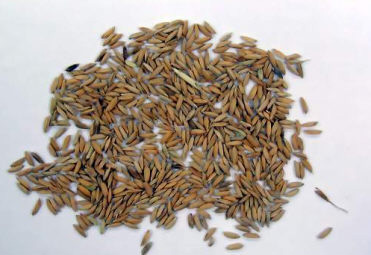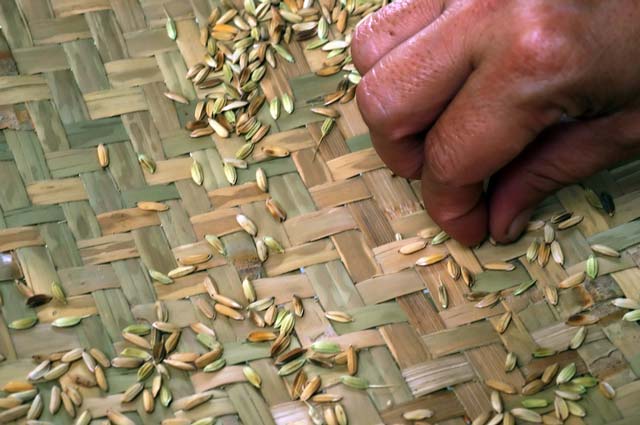Poor seed quality

What it does
Poor seed quality leads to low vigor and poor growth. They are also prone to weeds, insects, and diseases.
Why and where it occurs
The problem arises as most farmers in Asia keep their own seed and do not tend to do any seed processing to ensure varietal purity or seed quality.
How to identify
The following are symptoms of poor quality seeds:
- low germination, mixed varieties, low plant vigor, diseased plants, or the introduction of weeds
- seed source may be discolored
- seeds may be of different sizes and varieties
- seed source may contain inert, weeds or other matter
 Manual seed sorting to pick good seedsThe pattern of damage is usually general across the field.
Manual seed sorting to pick good seedsThe pattern of damage is usually general across the field.
There are various problems affecting crop establishment. These are cloddy soil, seed too deep, soil too soft at seeding, poor emergence in low spots in fields, heavy rainfall at seeding, soil crusting, poor seed distribution, low seed rate, water stress, muddy water at seeding, clogged seeder and/or pests such as ants, birds and rats that remove seed at planting.
To confirm the cause of problem, check or ask farmer about seed source and quality. It may be necessary to check germination, thousand-grain weight, seed purity and the extent of non-seed materials (e.g., inert matter or weeds).
Why is it important
Poor seed quality is a major problem throughout Asia. Yields are reduced due to poor vigor, diseases, and weeds introduced in the seed.
How to manage
- Use good quality seeds (high viability, high germination rates, varietal purity and seed should be full i.e., high thousand grain weight for the variety and free of insects, diseases and weed seeds).
- Perform seed processing to ensure varietal purity or seed quality.